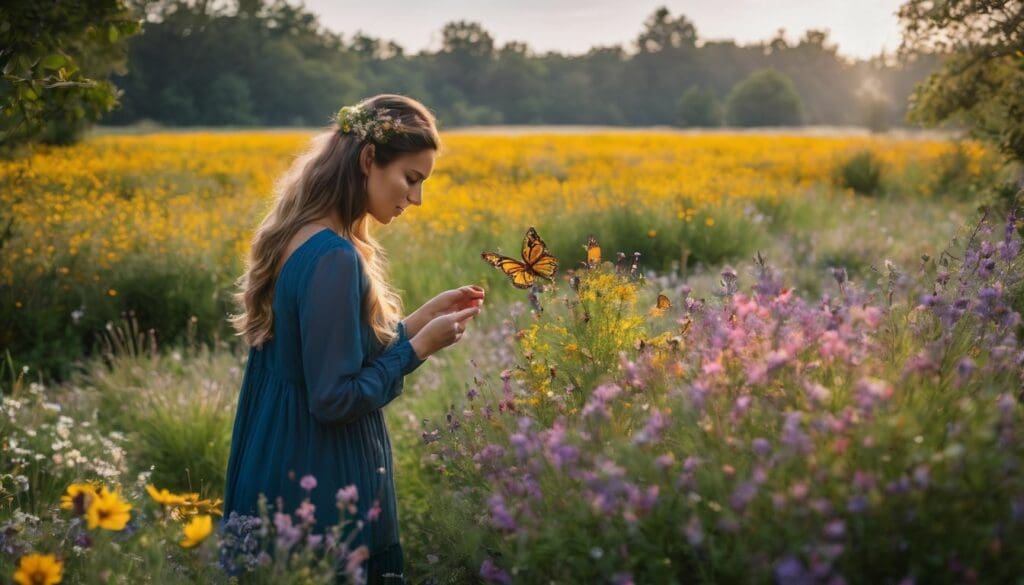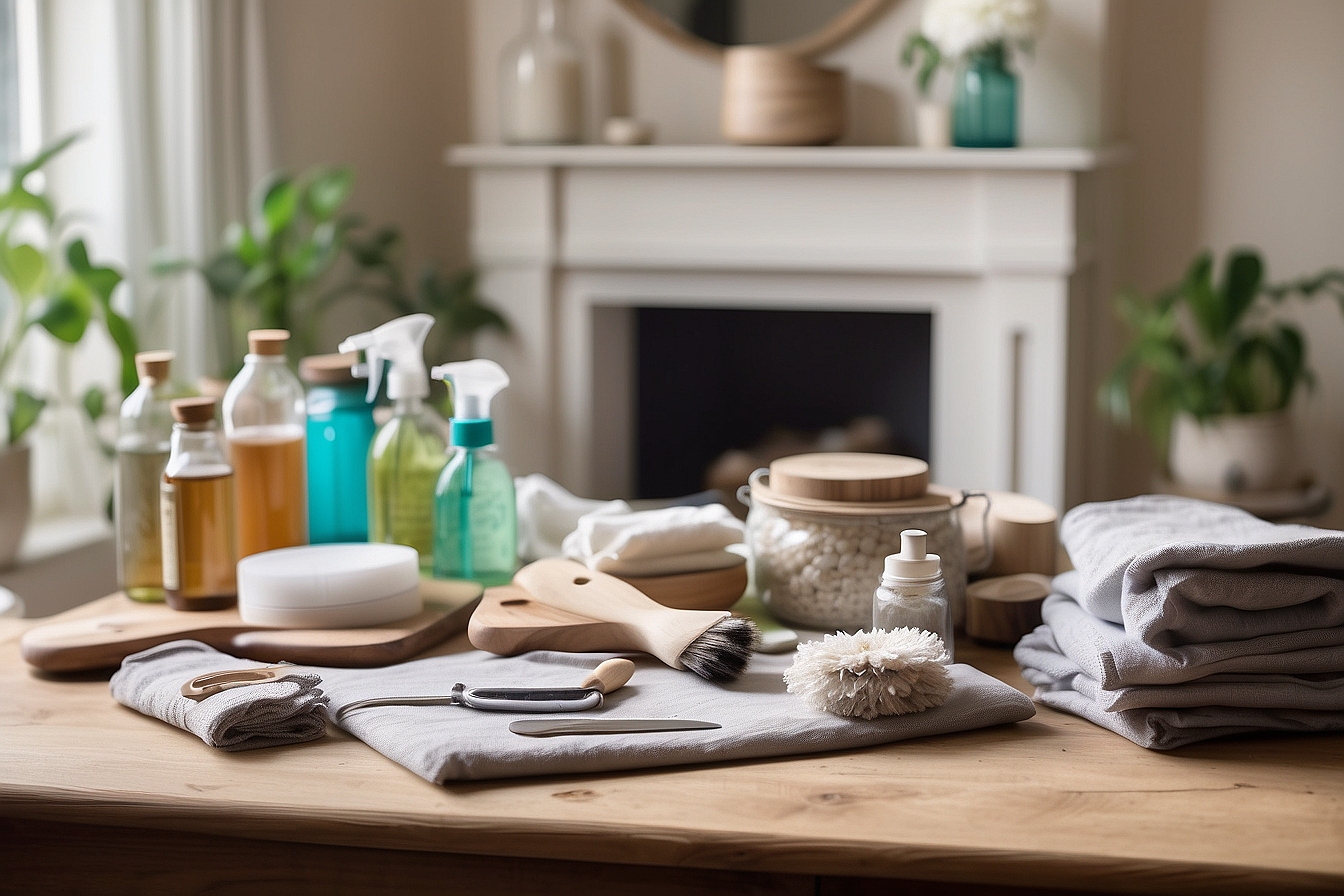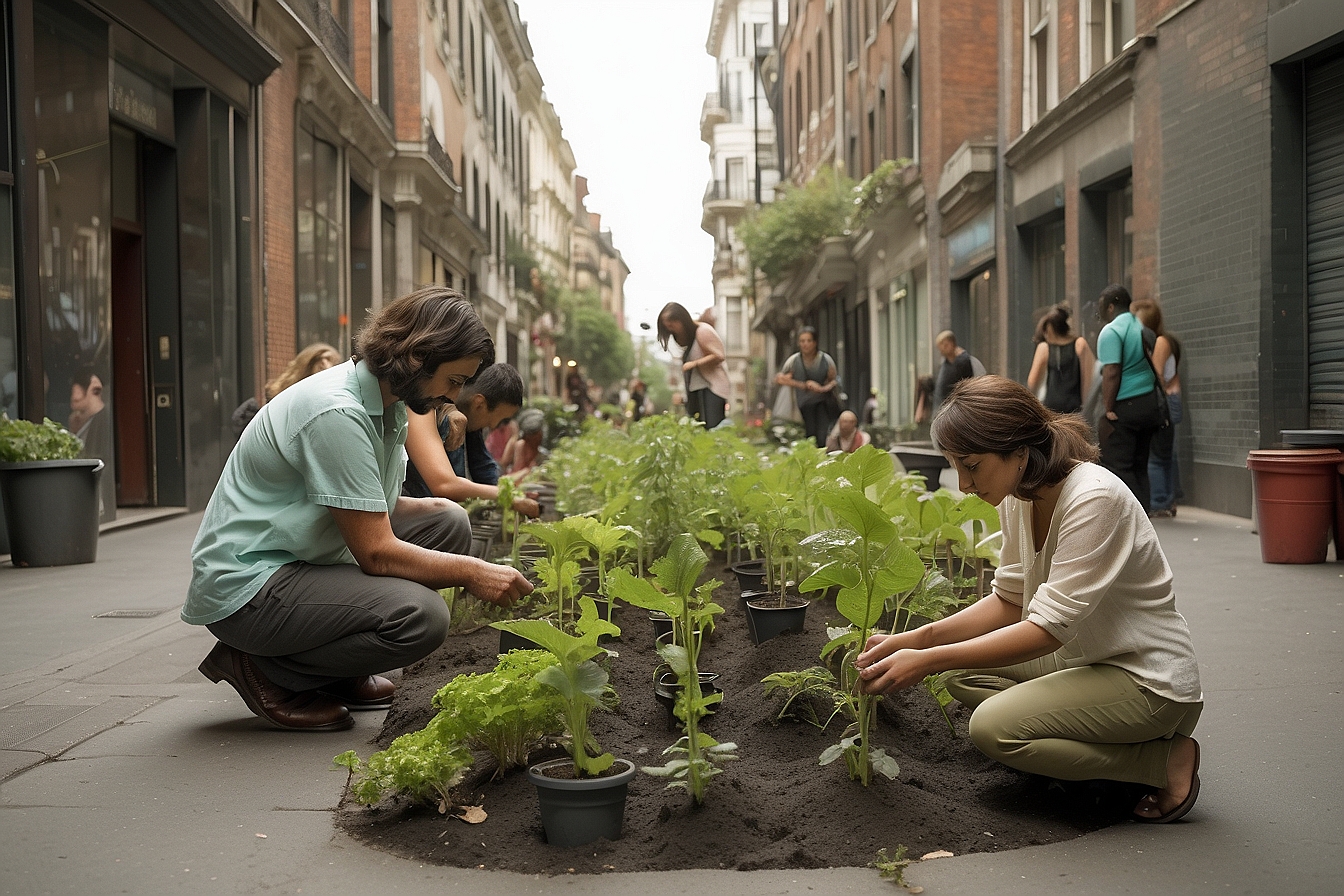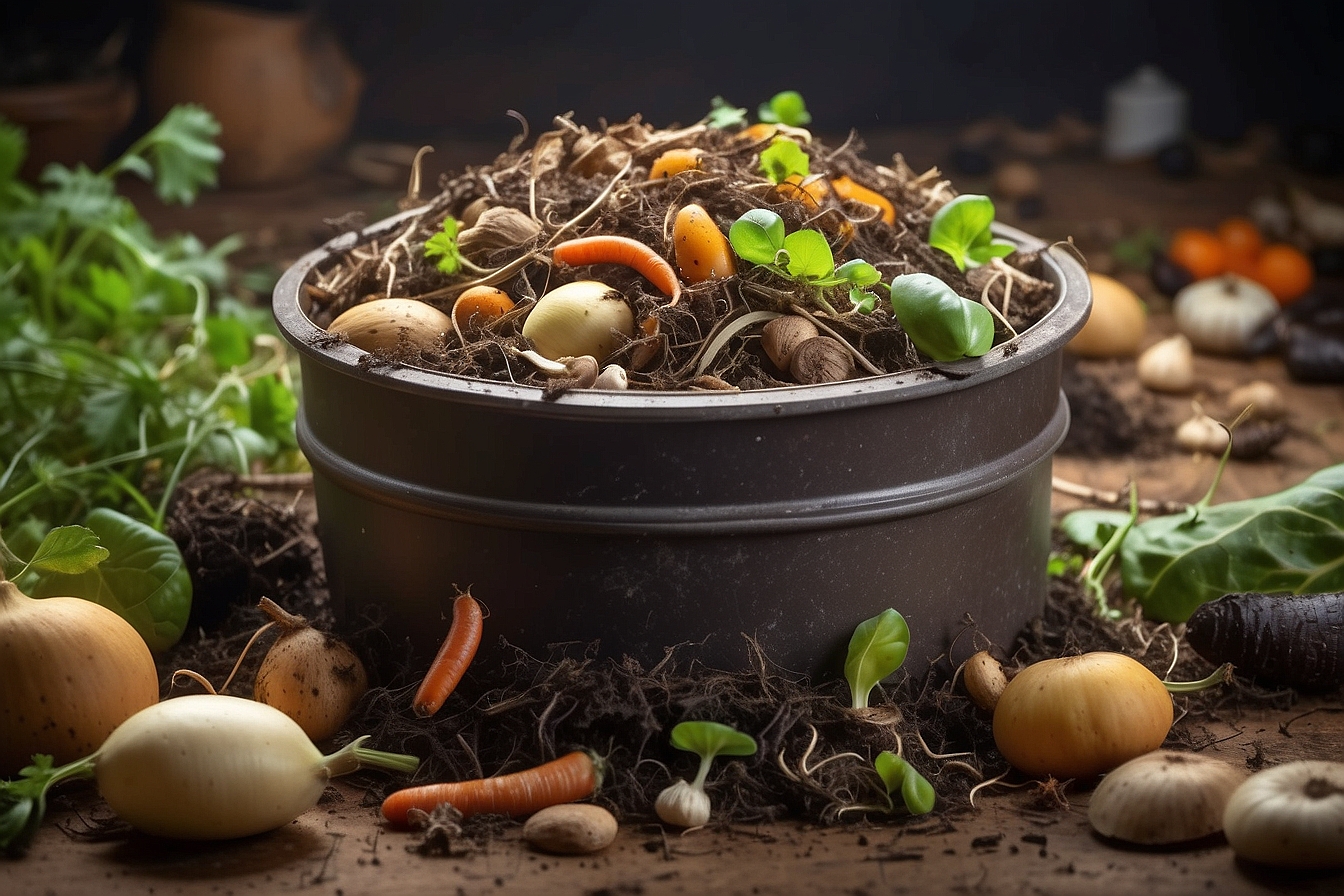Ever found yourself pondering over the tranquil calm in your garden, only to realise it’s a little too peaceful without the merry buzz of bees or the gentle dance of butterflies amongst your blooms? Well, you’re certainly not alone in this.
It turns out that with just a smattering of changes, our gardens can blossom into vital sanctuaries for local wildlife. Marvel at this: merely one square metre of flower-rich grassland can become home to hundreds of scuttling insects! Eager to get started? Our guide is chock-full of hands-on advice designed to help you cultivate a buzzing and flittering wonderland right outside your back door.
So roll up those sleeves—nature’s choir is ready for some new members!
Key Takeaways
- Planting native species in your garden like lavender, foxglove and berry-bearing shrubs can help support and attract local wildlife such as bees, butterflies and birds.
- Adding features to the garden such as bird feeders, bee houses, and hedgehog homes provides essential shelter for various species while contributing to biodiversity.
- Creating natural corridors with plants and reducing lawn mowing encourages movement of animals through the garden, allowing ecosystems to thrive organically.
- Providing a variety of water sources is beneficial for all forms of wildlife from birds that drink or bathe to amphibians that need aquatic environments.
- Avoiding the use of pesticides by implementing natural pest control methods helps protect the health of visiting wildlife and supports a balanced ecosystem within the garden.
Benefits of Creating a Wildlife-Friendly Garden
Creating a wildlife-friendly garden increases biodiversity and supports local ecosystems. It provides habitat for wildlife and reduces the dependence on pesticides.
Increases biodiversity
We’re giving nature a helping hand by inviting more life into our gardens. As we sprinkle native plant seeds and set up bird feeders, each flower and perch creates new opportunities for different species to thrive.
Our garden becomes a buzzing hub of activity, home to an array of insects, birds, and mammals. Planting diverse greenery not only beautifies our space but also serves as a beacon for wildlife far and wide.
With every butterfly attracted to the wildflowers and every earthworm burrowing in the soil, we contribute to a richer biodiversity.
Our actions lay the groundwork for ecosystems right in our backyards. Setting up a pond promotes habitat restoration where frogs can leap and dragonflies hover over crystal-clear water.
Implementing composting measures nourishes the land whilst reducing waste – it’s all part of crafting an eco-friendly sanctuary that brims with life. This concerted effort towards sustainable landscaping shapes resilient communities both above and below ground where diversity is not just encouraged—it flourishes.
Supports local ecosystems
By supporting local ecosystems, we create a balanced and thriving environment that benefits all living organisms. Native plants attract local wildlife, providing essential food sources and shelter for various species.
This helps maintain the delicate balance of the ecosystem and encourages biodiversity, ultimately contributing to the overall health of our natural surroundings. Additionally, reducing pesticide use in our gardens helps protect local wildlife and support their habitats.
Creating a wildlife-friendly garden also aids in the preservation of native plant species, which are vital for local ecosystems’ survival. By promoting these native plants, we can help restore damaged habitats and encourage sustainable growth within our communities.
Provides habitat for wildlife
Supports local ecosystems by providing a safe and nurturing environment for various species of wildlife. Creating a wildlife-friendly garden allows animals to find shelter, food, and nesting areas, contributing to the overall health of the ecosystem.
By incorporating native plants, water sources, and natural pest control methods, we can help support and encourage the presence of diverse wildlife in our gardens. This active involvement in habitat creation empowers us to make a positive impact on the environment while enjoying the beauty of nature right outside our doors.
Incorporating elements such as bird feeders, wildflower meadows, or planting native trees provides valuable resources for local wildlife. It’s rewarding to see birds building nests or butterflies fluttering around your garden knowing you’ve created an essential habitat for them.
Reduces dependence on pesticides
Creating a wildlife-friendly garden reduces the dependence on pesticides. Planting a variety of native plants and flowers can attract natural predators, like ladybirds and lacewings, which help control pests in the garden without the need for harmful chemicals.
Additionally, incorporating diverse plant life and creating a balanced ecosystem can naturally deter pest infestations, contributing to the reduction of pesticide usage.
Maintaining a healthy soil structure and providing ample food sources for beneficial insects also plays an important role in reducing the reliance on pesticides. By nurturing your wildlife-friendly garden with organic compost and avoiding chemical fertilisers, you can establish a thriving environment that promotes natural pest control while minimising the need for synthetic pesticides.
Planning Your Wildlife-Friendly Garden
Consider local wildlife and their needs, choose appropriate plants, and establish shelter and nesting areas to create a thriving habitat for wildlife in your garden. Read on to learn more about creating a wildlife-friendly garden.
Consider local wildlife and their needs
To create a wildlife-friendly garden, we consider local wildlife and their needs. By understanding the species in our area, we can provide appropriate food sources, water, shelter, and nesting areas.
This will attract diverse wildlife such as birds, pollinators, and small mammals to our gardens. Choosing native plants that are suited to the local climate helps support these species while also increasing biodiversity.
Incorporating features like bird feeders, bee houses, and wildflower patches enriches the ecosystem of our gardens. Providing for local wildlife not only enhances the natural beauty of our outdoor spaces but also contributes to conservation efforts by preserving habitats for animals amid urban development.
Choose appropriate plants
To create a wildlife-friendly garden, selecting the right plants is essential. The following are some tips for choosing appropriate plants:
- Opt for native plant species that are well-suited to your local climate and soil conditions such as foxglove, honeysuckle, or heather.
- Prioritise plants that provide food and shelter for local wildlife, such as berry-bearing shrubs for birds or nectar-rich flowers for pollinators like lavender or echinacea.
- Incorporate a variety of plant heights and textures to create diverse microhabitats within the garden, offering refuge for different types of wildlife.
- Avoid invasive plant species that could outcompete native vegetation and disrupt the ecosystem balance in your garden.
- Consider planting trees and shrubs with varying bloom times to provide a continuous food source for wildlife throughout the year.
- Integrate host plants for caterpillars of butterflies and moths, contributing to the overall biodiversity of your garden.
- Include aquatic plants if you have a pond, providing cover and nesting sites for amphibians and water-dwelling insects.
Establish shelter and nesting areas
To create a wildlife-friendly garden, it’s important to provide shelter and nesting areas for local wildlife. Here are some ways to establish shelter and nesting areas:
- Install bird boxes or nesting platforms in trees and on buildings to provide safe spaces for birds to raise their young.
- Create log piles, rockeries, or brush piles as hiding spots for small mammals, insects, and reptiles.
- Plant dense shrubs and bushes with branching structures to offer safe havens for birds and small mammals.
- Place bat boxes in suitable locations to provide roosting sites for bats, contributing to their conservation.
- Build insect hotels by stacking natural materials like bamboo, straw, and pine cones to attract beneficial insects such as ladybirds and solitary bees.
- Incorporate dense ground cover plants or low-growing shrubs to provide hiding places for small creatures like frogs, lizards, and hedgehogs.
Essential Elements of a Wildlife-Friendly Garden
To create a thriving wildlife-friendly garden, it’s important to provide essential elements such as food sources for pollinators, natural pest control, and nesting areas for birds.
Incorporating a variety of plant life will also help support the diverse needs of local wildlife.
Food sources for pollinators
To support pollinators in your wildlife-friendly garden, plant a variety of nectar-rich flowers such as lavender, sunflowers, and bee balm. Native plants like foxglove and coneflower are also excellent choices as they provide food for bees, butterflies, and other beneficial insects.
Incorporating a mix of flowering plants that bloom at different times throughout the year ensures a consistent food source for pollinators. Remember to avoid using pesticides on these plants to keep the nectar free from harmful chemicals.
Consider integrating flowering herbs into your garden design; mint, oregano, and thyme not only attract pollinators but also serve as practical additions to your culinary endeavors.
Water source
Choosing appropriate plants and providing water sources are essential elements of a wildlife-friendly garden. By incorporating features like birdbaths, shallow dishes, or small ponds, you can create a welcoming environment for birds, insects, and other wildlife.
Including a water source in your garden not only provides hydration for animals but also offers an opportunity to observe their natural behaviors up close.
To support the needs of local wildlife and promote biodiversity, consider adding a variety of water sources such as shallow bowls or bird baths to your garden. These features not only provide necessary hydration but also encourage wildlife observation and interaction within your outdoor space.
Natural pest control
After establishing a water source to attract wildlife, natural pest control becomes a crucial component of maintaining a wildlife-friendly garden. Introducing beneficial insects like ladybugs and lacewings can help keep harmful pests at bay, while avoiding the use of chemical pesticides that may harm wildlife.
Planting companion crops such as marigolds or garlic alongside susceptible plants can also deter pests naturally. Additionally, encouraging insectivorous bird species by incorporating nesting areas and perches can contribute to controlling insect populations in the garden.
Creating a balanced ecosystem within the garden through these natural pest control methods promotes harmony among the various forms of wildlife and fosters an environment where both plants and animals thrive without harmful interventions.
Nesting areas for birds
Birds need safe and comfortable nesting areas. To provide these, we can add bird boxes in various locations around the garden. These should be placed high up to help birds feel secure and away from predators such as cats or larger birds.
We may also include dense shrubs and trees that offer protective cover for nesting sites.
Creating a range of nest options will attract different bird species. Install different types of nest boxes, suitable for small, medium, and large-sized birds to encourage a diverse community of wildlife in the garden.
By providing an array of nesting areas, we contribute to enhancing biodiversity while supporting our local ecosystems.
A variety of plant life
In a wildlife-friendly garden, incorporating a diverse range of plant life is crucial. Different plants provide food and shelter for various species, promoting biodiversity. Native plants like lavender, heather, and foxglove attract bees and butterflies with their nectar-rich blooms.
Berry-bearing shrubs such as hawthorn and elderflower provide sustenance for birds throughout the year. Meanwhile, grasses and perennials offer hiding spots for small mammals while also attracting insects that act as natural pest control.
Integrating varied plant species ensures there are resources available to support different types of wildlife in the garden all year round. It creates a balanced ecosystem where each plant plays an essential role in supporting the local wildlife community.
Simple Ways to Create a Wildlife-Friendly Garden
Building a bee house can provide shelter and nesting space for solitary bees, while installing a bird feeder can attract various bird species to your garden. These simple additions can make a big difference in creating a wildlife-friendly environment.
Building a bee house
To support local pollinators like bees, it’s important to create suitable habitats for them. Constructing a bee house with materials like bamboo or drilled wood provides shelter and nesting sites for solitary bees.
Placing the bee house in a sunny, south-facing spot will encourage bees to inhabit it, helping to increase their population and support plant pollination.
Additionally, providing nesting areas for other wildlife such as birds and hedgehogs contributes to the overall biodiversity of your garden. It’s a simple yet impactful way to make a positive environmental difference while enjoying the beauty of nature right in your own backyard.
Installing a bird feeder
After building a bee house, the next step in creating a wildlife-friendly garden involves installing a bird feeder. By providing food for birds, we can attract them to our gardens and provide support, especially during the cooler months or when natural food sources might be scarce.
Placing bird feeders strategically around the garden allows us to observe these beautiful creatures up close while contributing to their welfare. Selecting different types of seeds such as sunflower seeds or thistle will attract a variety of bird species – promoting biodiversity in your garden.
Creating an environment that meets the needs of local wildlife is not only rewarding but also essential for maintaining healthy ecosystems. By incorporating elements such as nesting areas, water sources, and now bird feeders into our gardens with native plants and diverse vegetation points has allowed us to create a vibrant wildlife habitat right outside our doorstep!
Creating a hedgehog house
To create a hedgehog house, gather some simple materials such as a wooden box or crate. Cut out an entrance hole and place the box in a secluded area of your garden. Add some dry leaves and straw inside to make it cosy for a hedgehog to nest.
It’s essential to ensure that the house has good ventilation and is securely placed so it won’t tip over.
The hedgehog house should provide protection from predators, extreme weather, and disturbances. Positioning it near hedges or shrubs will give these nocturnal creatures easy access to forage for insects without being too exposed.
Planting wildflowers
After creating a hedgehog house, you can further enhance your wildlife-friendly garden by planting wildflowers. Wildflower meadows not only add beauty to your outdoor space but also provide essential resources for pollinators like bees and butterflies.
By incorporating native wildflowers into your garden, you can create a vibrant ecosystem that supports local wildlife and contributes to biodiversity conservation. Additionally, the variety of colours and scents from wildflowers will attract and sustain diverse species, making your garden a thriving habitat for wildlife.
Introducing different species of wildflowers such as red clover, foxgloves, and cornflowers diversifies the available food sources for pollinators in your garden. Moreover, these flowers provide nectar-rich blooms that support insect populations crucial to the wider ecosystem.
Incorporating native trees and shrubs
Incorporating native trees and shrubs into your garden is a crucial step in supporting local wildlife. Native plants provide food and shelter for birds, insects, and other animals, contributing to the overall health of your ecosystem.
By including species such as oak trees, hawthorn bushes, or birch trees in your garden, you can create a habitat that encourages native wildlife to flourish. Additionally, native plants are well adapted to the local climate and soil conditions, making them easier to maintain compared to non-native species.
Selecting native trees and shrubs supports biodiversity while also enriching the natural beauty of your garden. It’s essential to consider planting a mix of species that flower at different times throughout the year which further provides nectar sources for pollinators.
By doing so we can enhance our landscape by transforming it into a thriving sanctuary for local flora and fauna.
Tips for Maintaining Your Wildlife-Friendly Garden
Letting the soil settle after disturbance is important for wildlife. Providing corridors for wildlife to move through your garden can help maintain their access to resources. Managing lawn maintenance by reducing mowing frequency and leaving areas of long grass can provide habitat for insects and small mammals.
Building a pond as a water source can support a range of wildlife species, from birds to amphibians. Keeping things varied in your garden, with different plants and habitats, will ensure ongoing support for local wildlife populations.
Letting the soil settle
Allow the soil to settle after planting by gently watering the area. This will help plants establish their roots and ensure a stable environment for wildlife. Gradually introduce your garden to local fauna by embracing patience and letting nature take its course.
Ensure that the soil is left undisturbed for at least a few weeks after planting. Consider this time as an essential period of adjustment for both plant life and visiting wildlife.
Providing corridors for wildlife
Wildlife-friendly gardens thrive when connected by corridors that allow animals to move freely. These pathways can be created using native plants, shrubs, and trees to form natural bridges linking different habitats.
By establishing these corridors, we enable wildlife to forage for food, seek shelter, and migrate between various garden landscapes. This helps maintain biodiversity and supports the overall health of local ecosystems by promoting genetic diversity among species.
Corridors also play a crucial role in creating a more sustainable environment as they allow for the dispersal of seeds and pollen across different areas. This not only aids in the reproduction of plant life but also supports pollinators like bees and butterflies which are vital for maintaining healthy ecosystems.
Managing lawn maintenance
To keep our wildlife-friendly garden thriving, we mow the lawn less frequently to allow wildflowers and grasses to grow. By leaving some areas of overgrown grass, we provide shelter for small creatures and attract beneficial insects like bees and butterflies.
Additionally, we avoid using chemical fertilisers and pesticides on the lawn as these can harm wildlife. Instead, we opt for natural alternatives such as compost tea or organic mulch to maintain healthy soil and support biodiversity.
Furthermore, creating mown paths through longer grass can create safe travel corridors for small mammals like hedgehogs while adding aesthetic appeal to the garden. Regularly aerating the soil helps improve drainage, which benefits plant life while also providing habitat for earthworms – crucial food sources for birds! Finally, by planting native grass species in your lawn you further contribute to a biodiverse ecosystem in your own backyard.
Building a pond
When managing lawn maintenance, consider building a pond as a focal point of your wildlife-friendly garden. Ponds provide vital water sources for various creatures including birds, amphibians, and insects.
By creating a mini-ecosystem, you can attract diverse species and encourage biodiversity in your garden. Include native aquatic plants to offer shelter for wildlife and ensure the pond has sloping edges to allow easy access for animals such as hedgehogs or small mammals.
A well-planned pond also serves as an essential breeding ground for amphibians like frogs and newts. Furthermore, it contributes to the overall health of your garden ecosystem by attracting beneficial insects that thrive around water bodies.
Keeping things varied
Incorporating a diverse range of plants and features in your wildlife-friendly garden is crucial to attract and support various species. By including a mix of native plants, you can provide food sources for different pollinators and create a more natural habitat for local wildlife.
Installing bird feeders, bee houses, and nesting boxes will also diversify the types of animals that visit your garden. Moreover, making sure there are different areas for shelter, water sources, and varied landscaping will cater to the needs of a wider array of species.
Creating a balanced ecosystem within your garden by keeping things varied will ensure that it remains an inviting space for all kinds of wildlife throughout the year. Providing varying levels of trees and shrubs, along with open spaces and wildflower patches will encourage biodiversity while supporting numerous different species.
Conclusion
Incorporating native plants and creating a wildlife-friendly garden is a simple yet impactful way to support biodiversity. By providing food, water, and shelter for local wildlife, we can contribute to the health of our ecosystems.
Building habitats for pollinators, birds, and other creatures will help maintain a balanced environment. Let’s take small steps towards conservation by designing gardens that nurture and sustain a variety of wild species.
FAQs
1. What is involved in creating a wildlife-friendly garden?
Creating a wildlife-friendly garden means designing your outdoor space with native plants that support local wildlife, building habitats like bird feeding stations and wildlife ponds, and adopting ecofriendly gardening practices.
2. Why should I plant native species in my garden for wildlife?
Planting native plants is crucial because they’re tailored to support the needs of local birds, butterflies, and pollinators, making your garden a natural habitat for these creatures.
3. How can I make my garden help local wildlife all year round?
To create an ever-helpful sanctuary for animals, include seasonal food sources like berry bushes or seed-producing flowers, set up shelters such as logs or rocks for small critters to hide, and implement natural slug control measures without harmful chemicals.
4. Can composting benefit the animals in my garden?
Yes! Composting creates rich soil full of nutrients which not only improves plant growth but also supports diverse insects and microorganisms essential for a flourishing ecoconscious biodiversity garden.
5. What are some features I can add to make my conservation gardening effort more effective?
In addition to planting native flora; consider adding a butterfly-friendly area with colorful blooms; installing homes like bee hotels or bat boxes within your habitat restoration efforts; ensure there’s plenty of clean water by creating a small pond perfect for amphibians.





